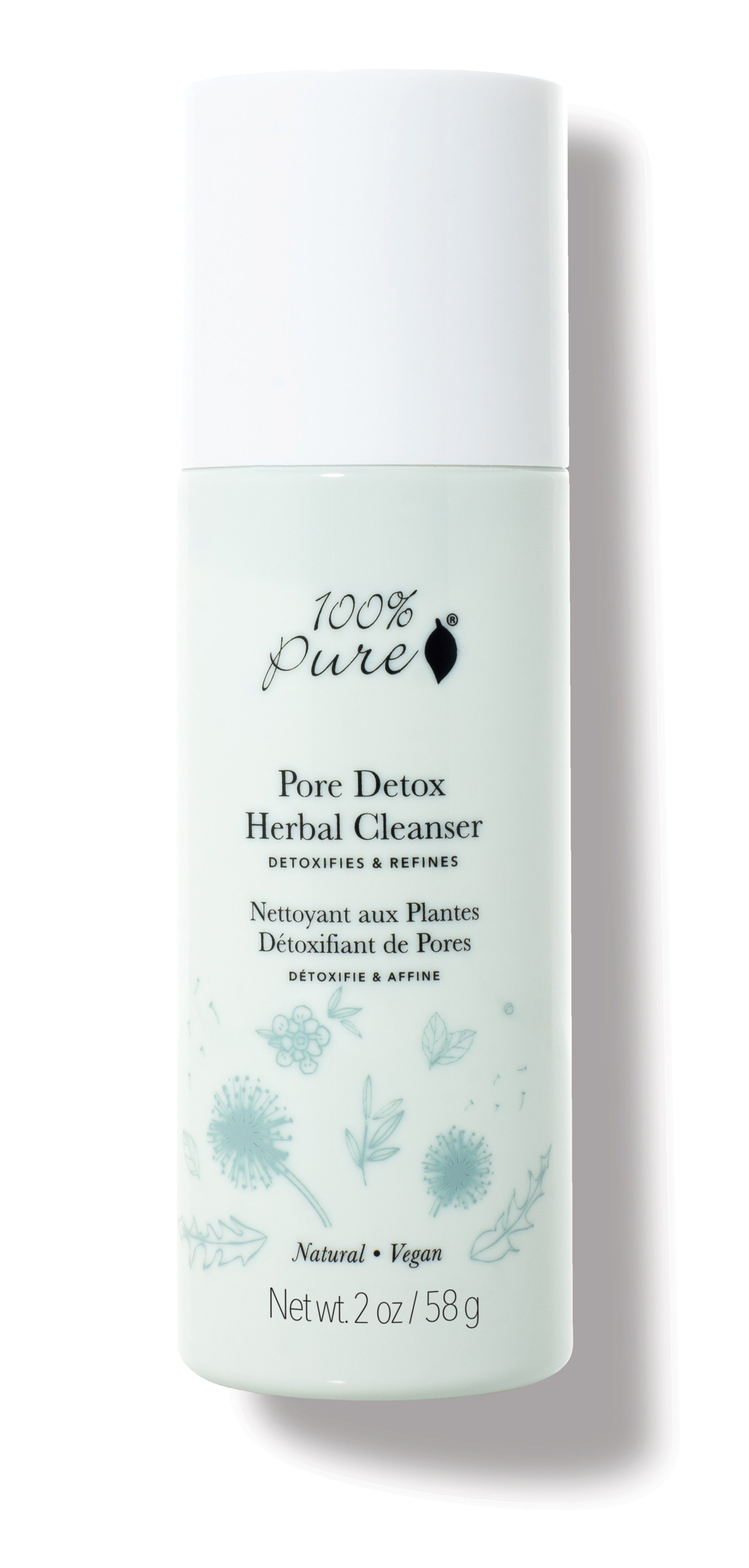
Pore Detox Herbal Cleanser
Ingredients overview
Highlights
Skim through
100% Pure Pore Detox Herbal CleanserIngredients explained
A type of clay that was originally found next to the French village, Montmorillon. Nowadays, Montmorillonite is used almost like a synonym for the most common type of clay, bentonite. Technically bentonite is montmorillonite and additional crystalline structures, or to put it another way, montmorillonite is 100% clean bentonite.
As for montmorillonite in skincare products, it's used for its magic absorbent properties. It's excellent at instantly sucking up sebum and gunk from the skin and it might even be helpful in treating some rashes or skin irritations (contact dermatitis). But be careful, it can also be drying.

A cleansing agent that's claimed to be so gentle on the skin that it hardly impacts the skin barrier. It also gives a rich, creamy foam, it's based on vegetable fatty acids and is readily biodegradable.
It's an especially important and popular ingredient in "syndet bars" (or soapless soaps). Dr. Leslie Baumann says in her great Cosmetic Dermatology book that thanks to the unique molecular characteristic of Sodium Cocoyl Isethionate, it "has defined a new dimension in the mildness of cleansing bars".



When it comes to Tea Tree, the essential oil is the one that steals the show with its well-documented antimicrobial and anti-acne effects. The extract is not very well defined, and it probably contains the active components of the oil in much-reduced concentrations. Manufacturers still mention soothing, antimicrobial, purifying and antiseptic properties for the tea tree extract.
The essential oil coming from steam distillation of freshly harvested, flowering peppermint sprigs. Its major component is menthol that gives the oil its well-known refreshing and cooling properties. Peppermint oil is traditionally used as an inhalant for cold and coughs and there is also some clinical data validating its use against headaches by rubbing a peppermint oil cream on the forehead.
As for skincare, other than the nice grassy-minty smell and the refreshing sensations, we cannot write good things. It can be a skin irritant, so much so that it is a well-known counterirritant for muscle pains creating mild surface irritation to make things better in the deeper layers. But for everyday skincare, counterirritation is not something you wanna do, so we think that peppermint oil is better to avoid, especially if your skin is sensitive.


This ingredient name is not according to the INCI-standard. :( What, why?!





This ingredient name is not according to the INCI-standard. :( What, why?!
Burdock root is a goodie plant extract that has anti-inflammatory and antioxidant properties. Also, it has some anti-fungal and seborrhea regulation magic powers that make the ingredient especially useful for greasy and flaky skin and scalp.


The plant extract coming from the leaves of English plantain or narrowleaf plantain that's native to Europe and Asia. The plant has plenty of traditional medicinal uses. Regarding the leaf and the skin, it's used to promote maturation of abscess and to speed up the recovery of incisions, pimples or wounds.
Modern studies do confirm that the plant, and specifically the leaves are loaded with active compounds that give the extract anti-inflammatory, antibacterial, and antioxidant magic properties. An in-vitro (made on chicken membrane, not on real people) study in Phytotherapy Research found that Plantain Leaf Extract in large concentrations has a comparable soothing effect to anti-inflammatory big shot, hydrocortisone.
Another study in the Journal of Herbal Medicine examined the antioxidant properties of the plant and found that the leaf extract has potent antioxidant activity (thanks to its flavonoids and hydroxycinnamic acids content) that's comparable or superior to multiple herbs and Chinese medicinal plants.
All in all, definitely a goodie plant extract that's good to spot on the ingredient list.
The essential oil coming from the leafs of the lovely herb, rosemary. It contains several fragrant components, including the well-known irritant, camphor (around 15%). It has a nice smell, is a potent antioxidant and it's also an antimicrobial agent.
If your skin is sensitive, it's probably a good idea to avoid it.
You may also want to take a look at...
| what‑it‑does | viscosity controlling |
| what‑it‑does | soothing | abrasive/scrub |
| what‑it‑does | surfactant/cleansing |
| what‑it‑does | abrasive/scrub | buffering |
| what‑it‑does | antimicrobial/antibacterial | perfuming |
| what‑it‑does | perfuming |
| what‑it‑does | antioxidant |
| what‑it‑does | surfactant/cleansing |
| what‑it‑does | antioxidant | soothing |
| what‑it‑does | antimicrobial/antibacterial |
| what‑it‑does | soothing | antioxidant | antimicrobial/antibacterial |
| what‑it‑does | antioxidant | antimicrobial/antibacterial |





